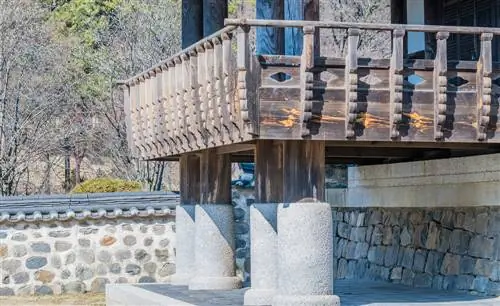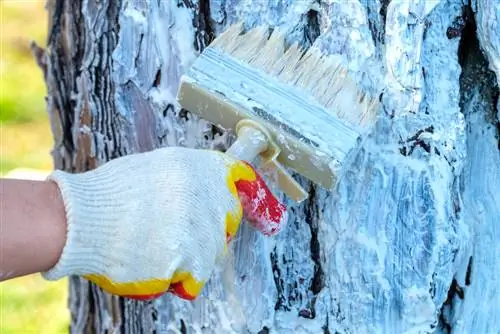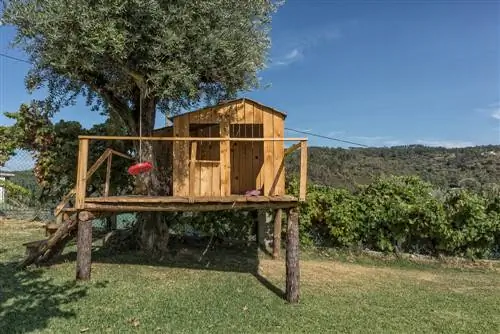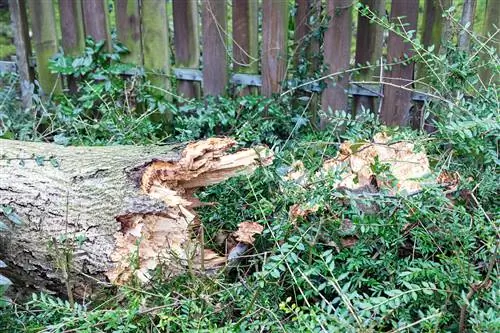- Author admin [email protected].
- Public 2023-12-16 16:46.
- Last modified 2025-01-23 11:21.
A tree trunk can be used wonderfully for various construction projects, for example to support the canopy of a garden house or a covered terrace. Such a trunk is also ideal for building a small, rustic pavilion in the middle of the garden and for the supporting trunks to be covered with climbing plants. In order for the trunks to stand securely and last for a long time, you must anchor them firmly in the ground. One way to do this is to set it in concrete.
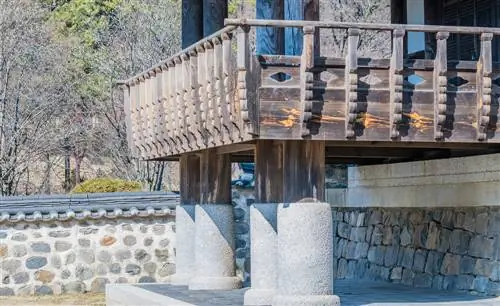
How do I properly encase a tree trunk in concrete?
To successfully encase a tree trunk in concrete, dig a rectangular hole, fill one-third with drainage material, position the impregnated trunk, pour cement, and slope the surface for water drainage. Well-dried hardwood is best.
Impregnate wood before inserting
When implementing the project, however, please note that tree trunks buried in the ground or set in concrete can quickly rot. To stop the rotting process and extend the durability of the wood, you should impregnate it before locking it. This can be done by painting over it several times with a wood protection paint (€59.00 on Amazon) or, this method is more effective, by first soaking the entire trunk in wood protection until the wood is completely soaked and then covering it with tar (e.g. bitumen). to collect. You should also only cast well-dried hardwood such as oak in concrete, as soft wood rots within a very short time despite your best efforts - this especially applies to wood such as birch or spruce.
Setting a tree trunk in concrete: This is how it's done
Then you can start setting it in concrete. The best way to do this is as follows:
- If possible, avoid concreting in sandy or muddy soil.
- This one isn't tight enough.
- Determine the location of the required holes.
- Dig a rectangular hole.
- This should be three times the size of the tree trunk.
- This rule applies at depth: a third of the trunk disappears into the ground.
- Dig the hole again another third (i.e. one sixth the length of the tree trunk) deeper.
- Fill this bottom third with drainage material: pebbles and gravel.
- Tamp down the drainage layer well.
- Now hold the tree trunk in the middle of the hole.
- You may need several people for this.
- Fill in the freshly mixed cement.
- The upper surface should not be completely straight, but rather slanted towards the outside.
- This allows rainwater to drain away better.
- Tamp the cement well and smooth it out.
Do the casting in concrete on a sunny and dry day, as the concrete will then dry faster and better.
Tip
Instead of encasing the tree trunk in concrete into the ground, you can also anchor it over the foundation. This means it comes into less contact with moisture and lasts longer.

